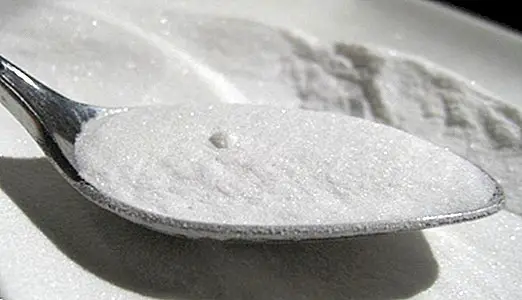Calcification: discover what it is and its symptoms
Calcium is an essential mineral for strong and healthy bones and teeth besides being essential for our body to function well. In addition, the body needs calcium for the muscles to contract properly, for the blood to clot as well as for the nerves to also function, which is the transmission of nerve impulses.
But nevertheless When the organism presents disorders that prevent it from metabolizing this mineral well, calcification occurs.. We can say then that Calcification occurs when the calcium that accumulates in the body is not well dissolved by the blood and is deposited in other areas of the body how can tissues be.

In the case where calcium accumulates in the tissues, the tissue hardens, causing the movement to shorten.
An excess of calcium, as it could be in a shoulder, produces reduced mobility in the muscles that surround it, where calcium has been deposited, also causing movement pain.
99% of the calcium that enters the body tends to be deposited in bones and teeth, the rest of the calcium dissolves in the blood. When there is an excess of calcium in the blood that exceeds normal levels the disease called hypercalcemia occurs. Calcifications are detected by radiographs.
The most common areas where calcifications usually occur are usually the shoulder, the breasts, the brain and the prostate.
Symptoms of calcification
- Bone spurs.
- Bone pain.
- Lumps or masses in the breast (microcalcifications).
- Frequent bone fractures.
- Curvature of the column.
- Muscle cramps.
- Tartar in the teeth.
- Kidney stones
- Hardening of the arteries (arteriosclerosis).

Calcification can become serious in some cases so we should pay attention to the following symptoms:
- Strong pains in the bones.
- Severe headaches.
- Nausea or vomiting
- Convulsions
- Spasms
- Muscle contractions
- Hearing loss.
- Sudden abdominal pain.
- Pain in the pelvis.
There are occasions when calcifications appear as a reaction of the body to lesions. Calcifications may also appear as a normal response in the healing of some musculoskeletal injury.
What are the risk factors that can predispose us to calcification?
There are several different factors that can predispose us to suffer calcification. The most common are the following:
- Autoimmune disorders
- Genetic inheritance of hypercalcemia (calcium metabolism disorder).
- Alcohol abuse.
- Internal injuries in the tissues.
- Age.
The calcifications can become complicated to the point of being serious when the calcification is in a tumor tissue that could be cancerous or when it affects the arteries.
We must also pay attention to the calcifications in the breast or in the breast tissue since this type of calcification could hide breast cancer.
As we have said before, calcifications can be detected by an X-ray.
If we suspect that we may have calcification, we should go to the doctor to make a timely review and give us the appropriate treatment., depending on where the calcification has been located.
When the calcification is not treated, the risk of suffering from serious health problems is quite high, with risk of heart attacks, cancer extension, deformities, or peripheral arterial disease. This article is published for informational purposes only. It can not and should not replace the consultation with a Physician. We advise you to consult your Trusted Doctor.


